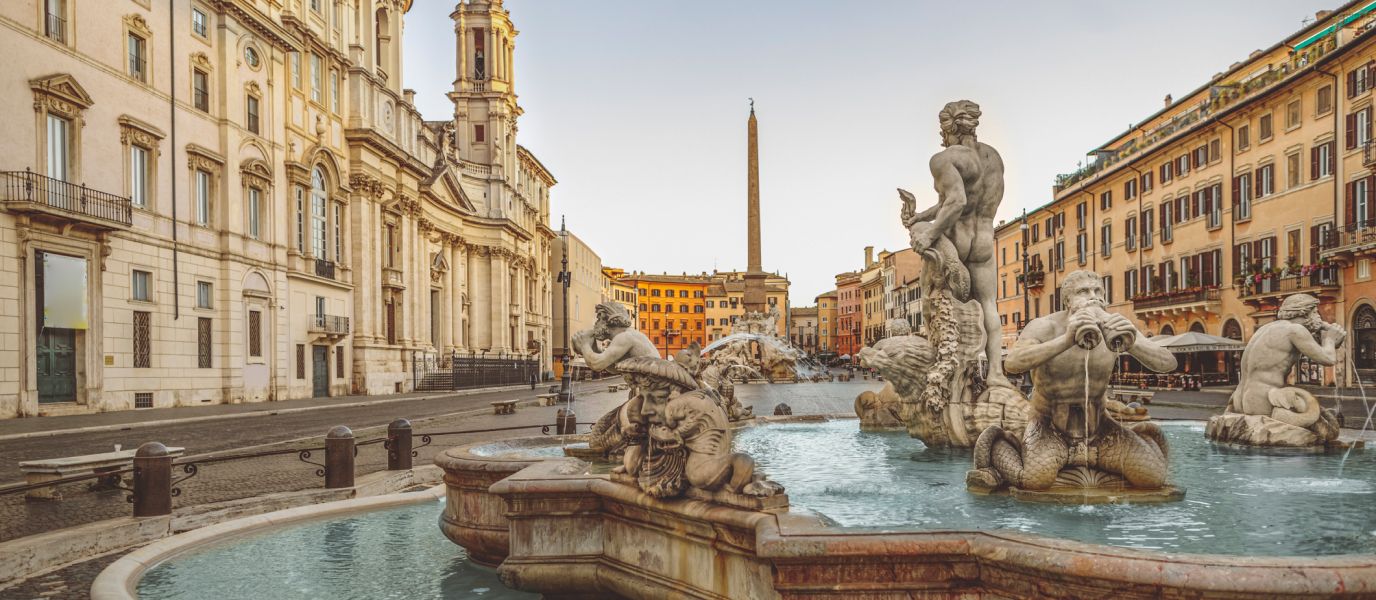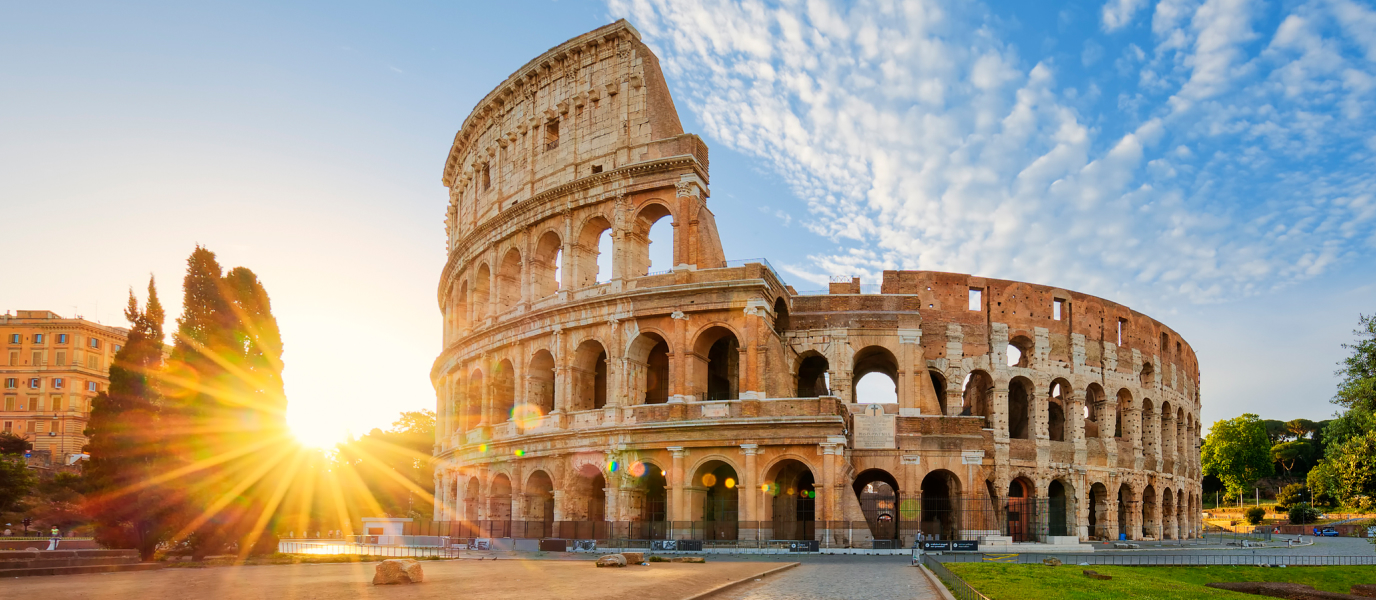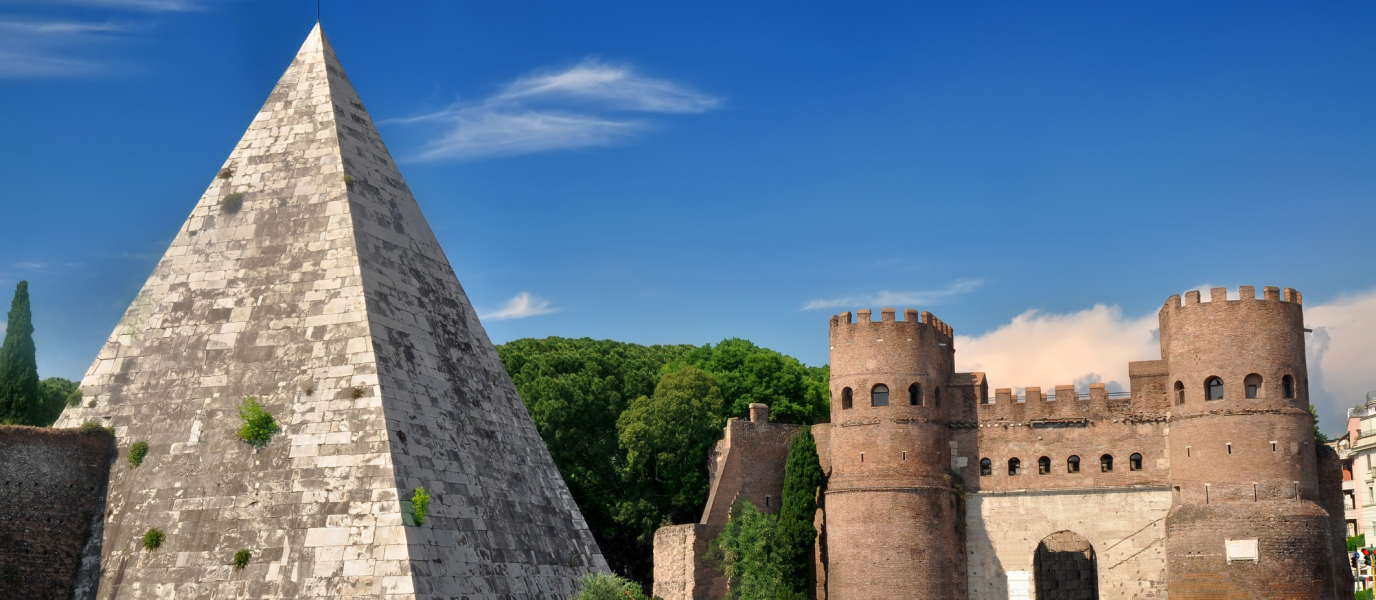Rome’s Baroque Piazza Navona, also called the Square of the Fountains, is one of the city’s most emblematic places. Complete with three fountains, and lined with ochre-coloured buildings adorned with flowers in summer, the piazza is constantly alive with tourists, street vendors and artists.
The piazza owes its elliptical shape to the stadium built in this space by Emperor Domitian in 86 AD for sporting competitions and gladiatorial contests. It was originally known as the Circus Agonalis before the name become in agone in the Middle Ages, later navone, and finally Navona.
Martyrdom in Piazza Navona
In the year 304 AD the Piazza Navona witnessed the martyrdom of Agnes of Rome, a 13-year-old girl who refused to renounce her Christian faith or to marry a pagan. Before being killed, Agnes was dragged to a brothel and then thrown naked into the stadium. The story goes that her hair quickly grew to cover her naked body. A chapel was soon raised at the place of her death and in the 17th century was transformed into the church of Sant’Agnese in Agone, notable for its peculiar concave facade.
The piazza’s current Baroque aesthetic and fountains were created by order of Pope Innocent X. Every weekend in August from 1652 to 1866, the central part of the piazza was flooded to become ‘the lake of Piazza Navona’ before the tradition was abolished.
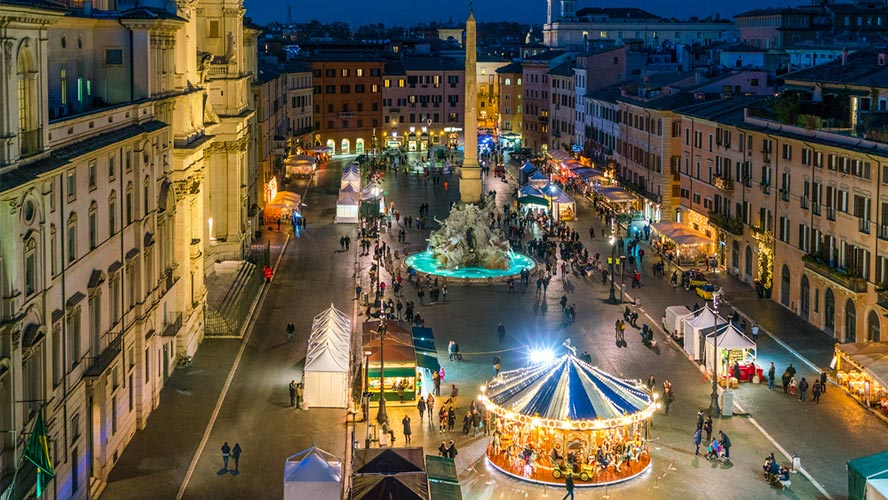
Bernini’s Fountain of the Four Rivers
The Fontana dei Quattro Fiumi (1648) by the Baroque genius Gian Lorenzo Bernini is the centrepiece of Piazza Navona. The four main figures in the fountain represent the four rivers of paradise (the Nile, the Ganges, the Río de la Plata and the Danube) and the four corners of the world: Africa, Asia, America and Europe. Rising from the fountain is an Egyptian obelisk in honour of Domitian and bearing the symbol of the family of Pope Innocent X. The latter also commissioned the Palazzo Pamphili which sits to the left of Sant’Agnese and is now the Brazilian Embassy.
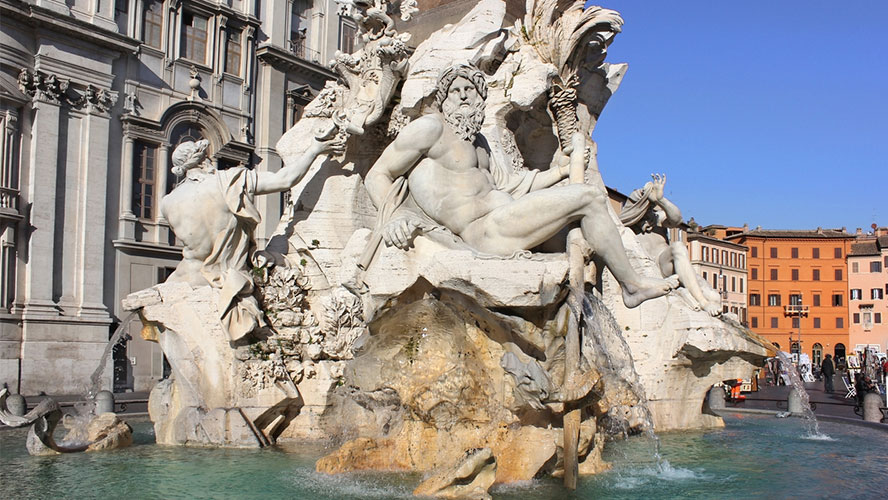
Fountain of Neptune and Moor Fountain
Bernini’s fountain is so beautiful that visitors to Piazza Navona often neglect the two smaller fountains at either end of the square. The Fontana del Nettuno (1574) depicts the god of the sea battling an octopus while the Fontana del Moro (1575) boasts another sea god. Both were the work of Giacomo della Porta.
About Bernini
Bernini allegedly designed one of the sculptures in the Fountain of the Four Rivers with shielded eyes to symbolise his discontent at the church of Sant’Agnese having been designed by his rival Borromini. The anecdote is something of a contradiction given the fountain was built before the church.
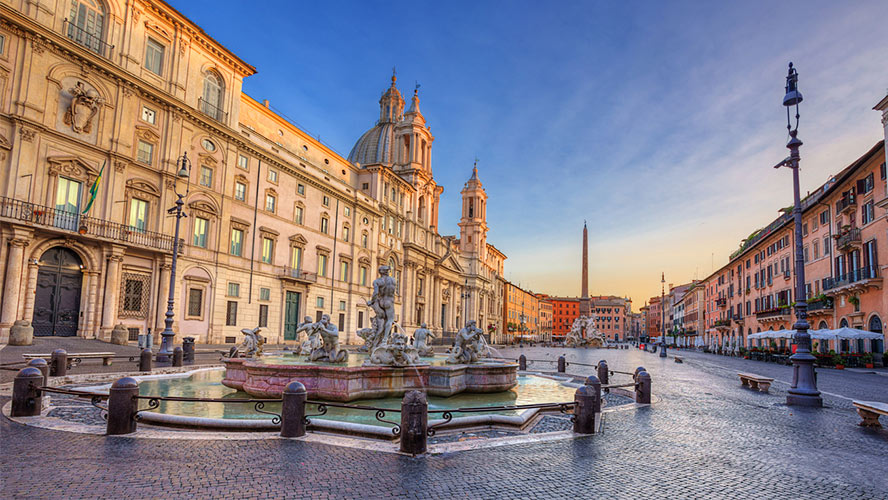
Visiting Piazza Navona
There are plenty of terrace cafes around Piazza Navona though be prepared to pay a pretty penny in this part of town! That said, once you’ve bought something you can sit there for as long as you like. The most famous places are Caffè di Colombia and the restaurant Tre Scalini.
By night, the lighting in the piazza changes the atmosphere completely and it’s a great place for an evening stroll among artists and caricaturists. Around Christmas time the piazza fills with the small travelling stalls of the Befana market.
The narrow streets around Piazza Navona have plenty of picturesque and charming places as well as cosy trattorias where you can sample some typical Italian cuisine.
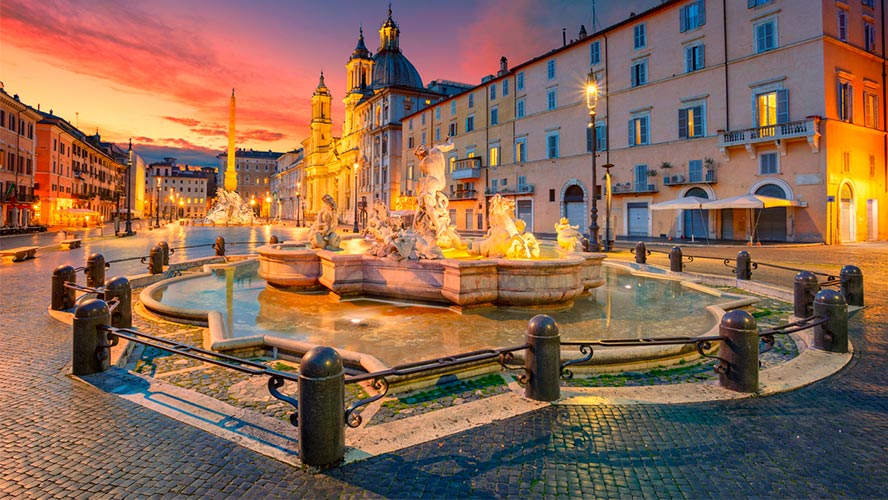
You’ll come across more historical and religious heritage too:
- Via dei Coronari is a delightful street filled with antique shops.
- The church of Santa Maria della Pace is a jewel of the Renaissance period with frescoes by Raphael.
- San Luigi dei Frances in another church with several works by Caravaggio depicting the life of St Matthew.
- Sant’Agostino has a fresco by Raphael, a canvas by Caravaggio and a sculpture by Sansovino along with the remains of St Monica, the mother of St Augustine.
- The Palazzo Altemps, part of the National Roman Museum, contains a magnificent collection of classical sculpture.




































































